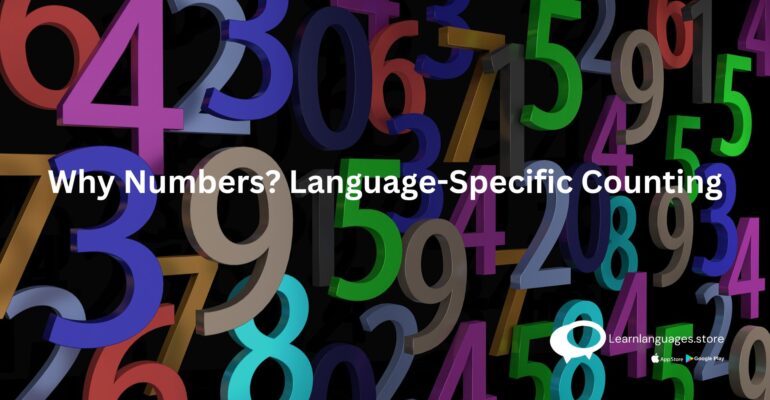Why Numbers? Language-Specific Counting
Why Numbers? Language-Specific Counting
Four-Twenty-Nine Issues French Numbers Ain’t One!
Language-specific counting systems
French speakers: question.
Why numbers?
If you took a little French in high school, you will understand.
English Speakers Hate French Numbers
Counting is simple. Quarante (40), cinquante (50), soixante (60)—it is rational. till 69.
Everything changes abruptly. 71 becomes soixante-et-onze, or “sixty-and-eleven,” instead of septante-et-un.
75 is’sixty-fifteen’. Four twenties is 80.
And 98? Well. Simply put, quatre-vingt-dix-huit “four-twenty-ten-eight” is hard to forget!

Not only French. Welsh, Irish, Danish, and Basque numbers do not follow English’s tens+units pattern either.
World Language Counting and Numbering History
Linguistics explains this.
Counting systems evolved over time. The Maya used a line, dot, and shell to count and calculate big numbers.
Because different cultures counted things differently, their number-naming principles differed. Even if the counting method has changed, modern language often retains the old systems.
Base-10 Numbers
A numbering system counts units until they reach the “base” number. Multiples of the base are used to express greater numbers.
The decimal system, from which English numbers are derived, is the most common. Large numbers in base 10 are multiples of 10, with residual units appended.
“Sixty,” “Seventy,” and “Eighty” all mean this. It expresses multiples of 10: “six tens,” “seven tens,” etc. Eighty-two means “eight tens and two.”
Is that it?
Not really.

Not all languages use decimal.
Despite its extensive use in currencies and the metric system, many languages spoken today predate base-10 in math.
French, for example, retains historical counting methods in its number words.
Vigesimal (base 20) is the most frequent alternate numeral system.
Base-20 numbers
Vigesimal originates from the Latin word viginiti, meaning “twenty,” which also gives us the French number vingt (20).
Similar to base 10, base 20 numbering uses multiples of twenty. Then, the 20-groups are counted to express numerals 21 and above.
Vigesimal systems employ 1, 20, 400, 8,000, and 160,000 instead of 1, 10, 100, 1,000, 10,000, and so on, with each category representing 10 × the previous category.
In vigesimal numbering, 1-20 have names. This compound form communicates numbers exceeding 20
72 is “three twenties and twelve” in vigesimal. It is used here.
44 is berrogeita lau.
Translate it:
berr-ogei-ta-lau
Few languages employ full vigesimal. One vigesimal numbering system, Yup’ik, is spoken in western and southern Alaska.
Systems Within Systems: Hybrid Decimal-Vigesimal Systems
Many base-20 languages use base-10 numbering systems to produce a hybrid decimal-vigesimal system.
Basque exemplifies this.
Take 256. In base 20, this number would be 20s. Yoruba speakers pronounce “thirteen-twenties minus four.”
Basque uses base 20 to represent numbers under 100, unlike Yoruba, which “borrows” 100 from the decimal system.
256 in Basque is:
Berr-eun-eta Berr-ogei-ta-hama-sei
Two-hundred and two-twenty-and-ten-six
[Vigesimal] + [decimal]
French is another hybrid. Only constructions like quatre-vingt-quinze use the French vigesimal system between 70 and 99.

French speakers in Belgium and Switzerland utilize decimal instead of base 20. Nonante-sept is more common in Liège and Geneva than quatre-vingt-dix-sept.
Irish, Welsh, and Danish use decimal-vigesimal systems.
Due to ancient civilizations’ vigesimal counting systems, base-20 systems tend to cluster in languages and regions. Mayan influence keeps many central American languages using base 20 components.
Numbering Systems
Few languages utilize numbering systems other than base 10 and 20, yet they do.
Modern Pacific languages like Drehu, from French Polynesia, use quinary systems (base 5).
The New Guinean Ekari language utilizes a sexagesimal (base 60) system with base 20 and 10 for numbers below 60.
3rd millennium BC Sumerians utilized base 60. Their sexagesimal counting method created the 60-minute hour.
Learn Languages Store
Vashi,
Email: services@learnlanguages.store










